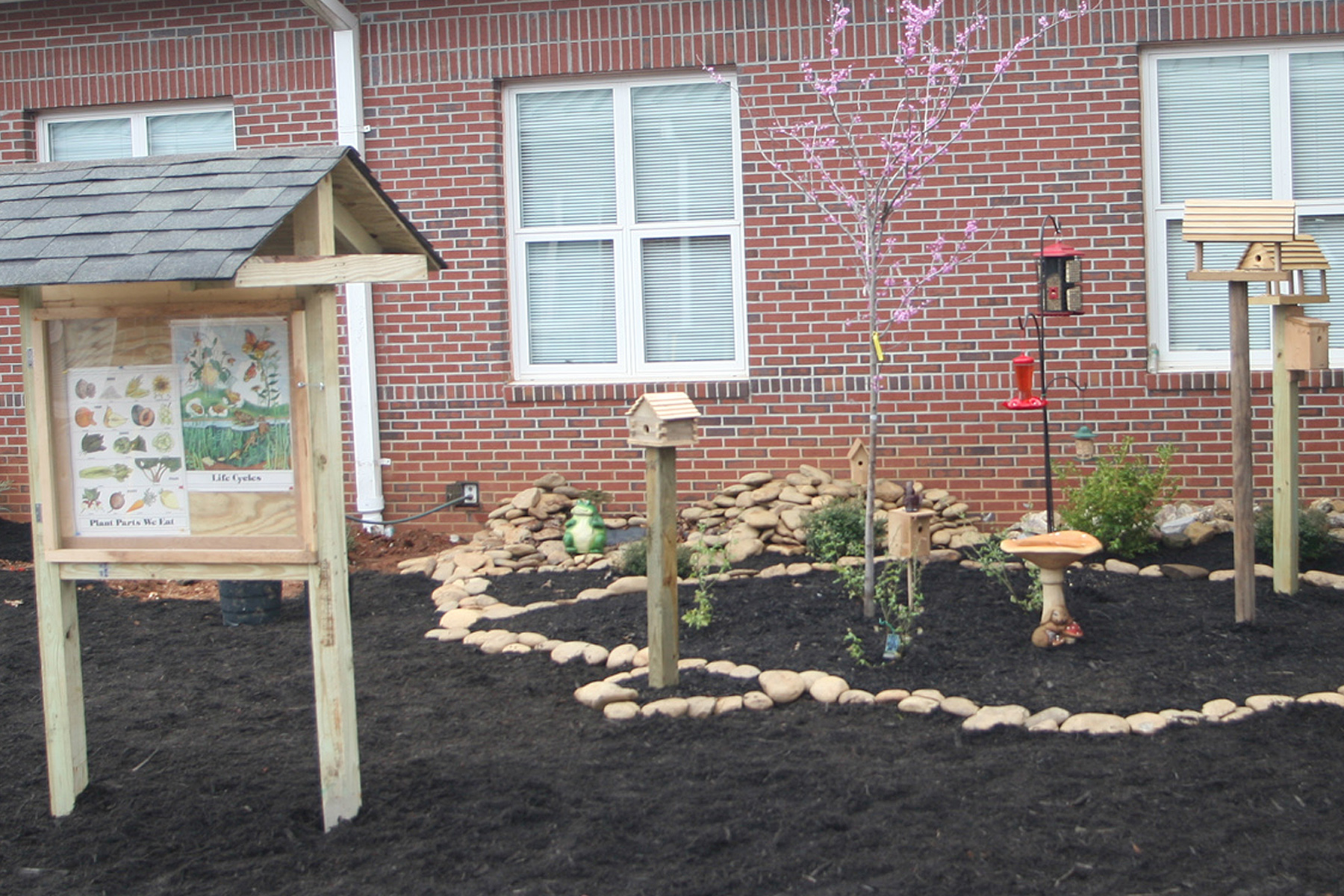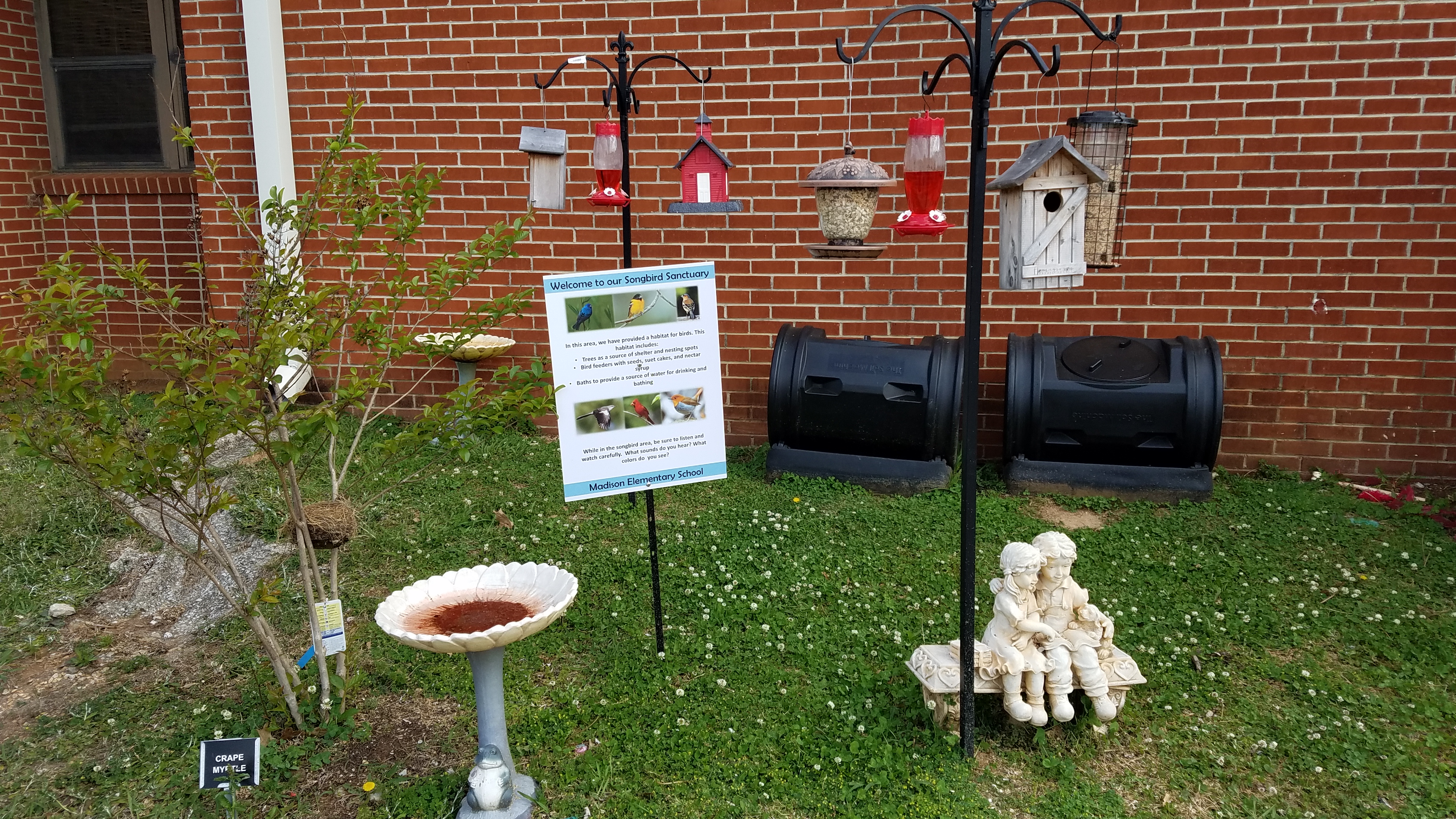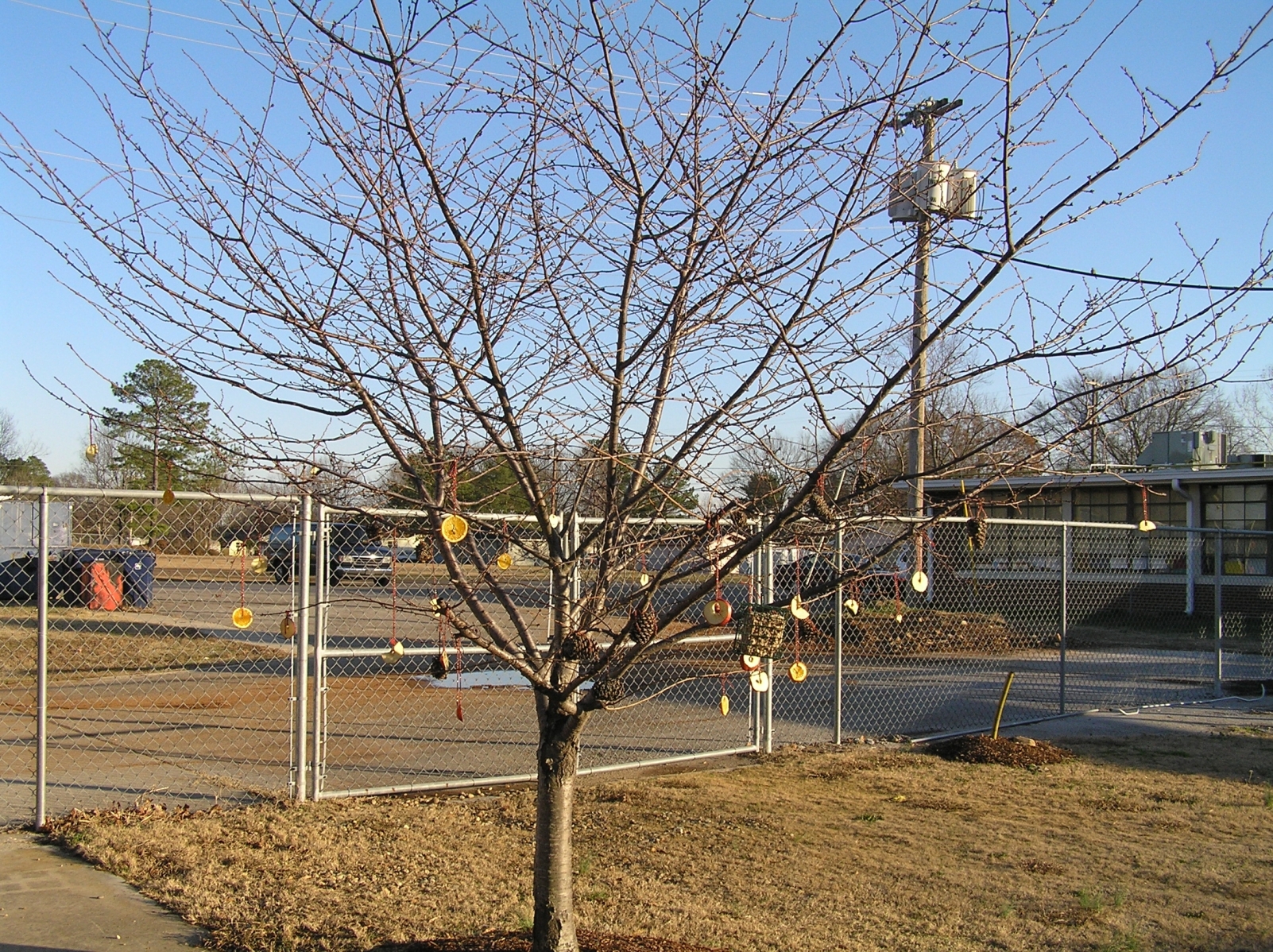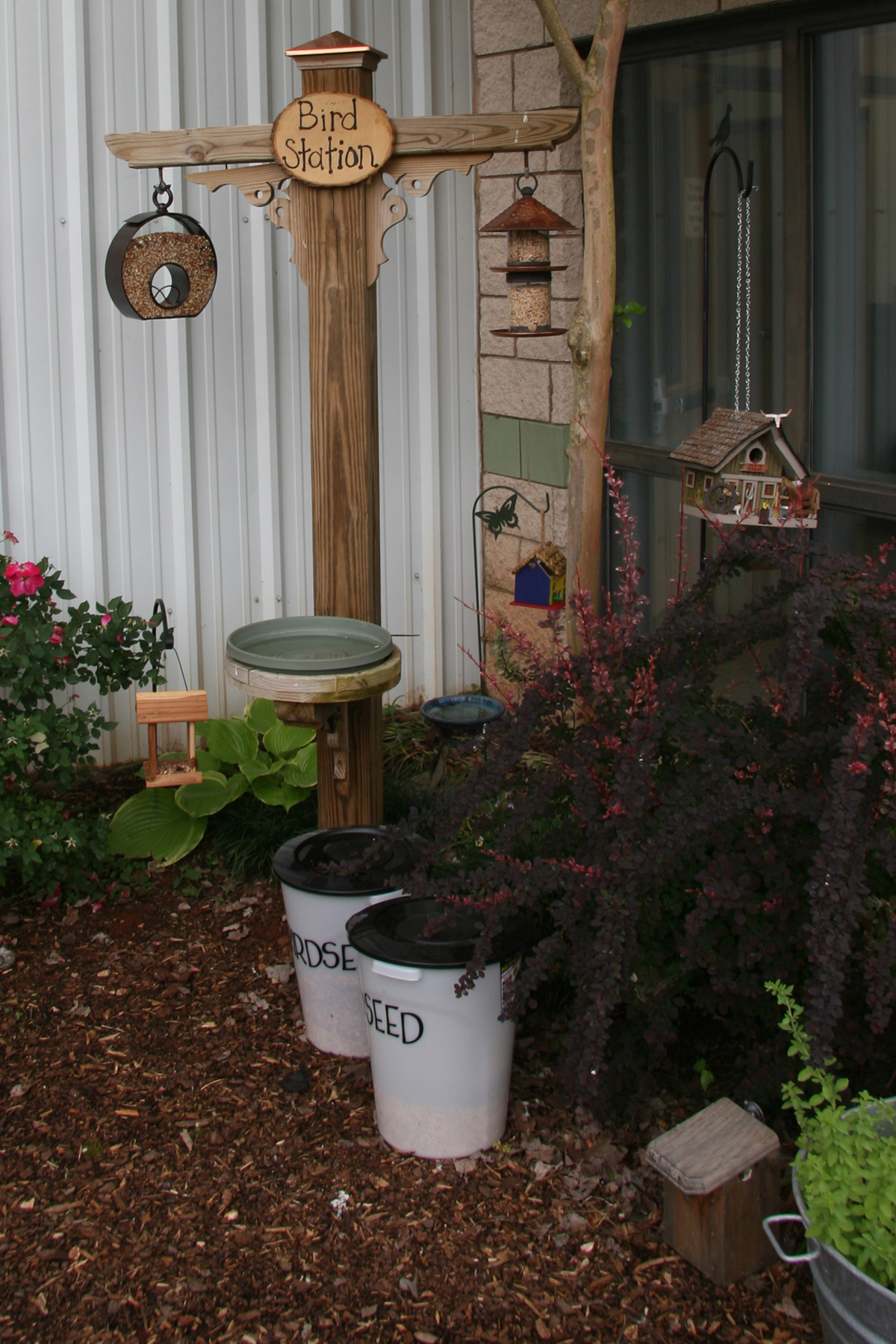Outdoor Learning Station: Songbird Sanctuary
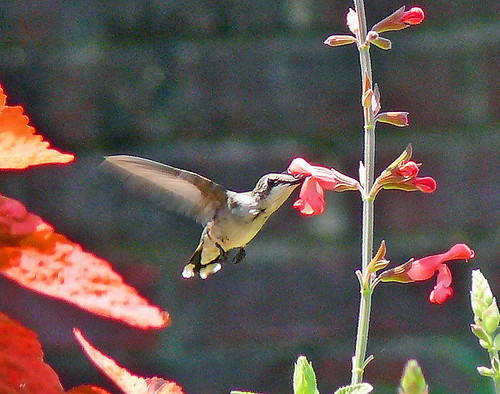 A Songbird Sanctuary creates great wildlife observation opportunities and provides fun, exciting hands-on activities.
A Songbird Sanctuary creates great wildlife observation opportunities and provides fun, exciting hands-on activities. Below in the information you need to help you create, utilize and maintain your songbird sanctuary as an educational tool with your students:
Habitat Suggestions | Materials Budget | Plants & Plant ID Signs | Construction Instructions |
Educational Sign & QR Code | Activity Resources | Maintenance Tips | Example Photos
Songbird Habitat Suggestions
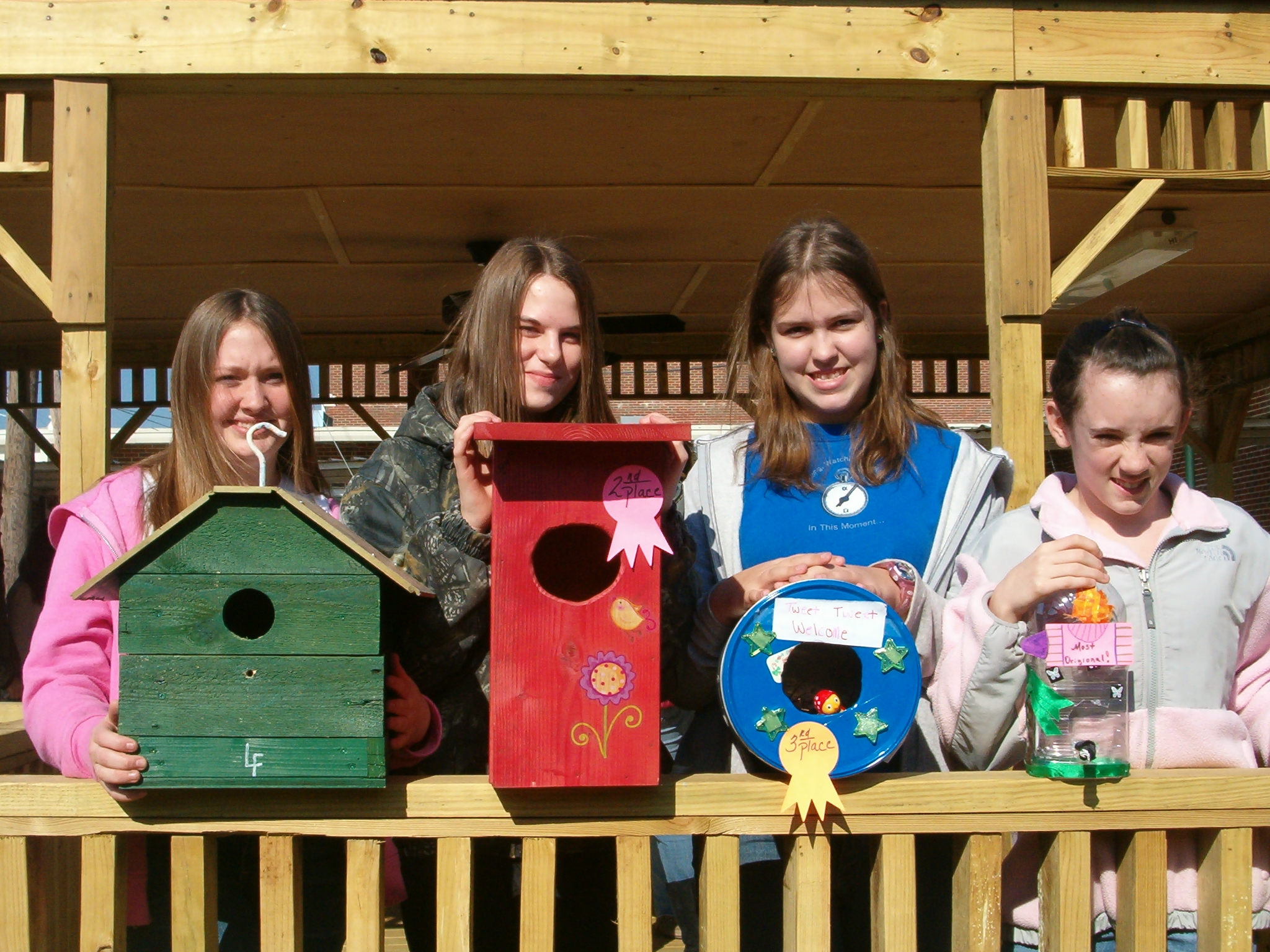
Habitat Suggestions (PDF) - A songbird sanctuary should provide habitat for local and migrating songbirds, including:
Food: (1) native trees, shrubs, grasses, forbs (wildflowers), and vines that produce mast (such as berries, seeds and nuts);
(2) bird feeders with seed, nuts, suet, sugar water, and fruit; and/or
(3) native shrubs, grasses, and forbs that attract insects for the birds to eat.
Water: (1) natural creek or pond;
(2) bird bath; or
(3) water garden.
Shelter: (1) native trees, shrubs, or grasses;
(2) native evergreens; or
(3) nesting boxes for roosting.
Places to Raise Young: (1) native trees, shrubs, or grasses;
(2) native evergreens; or
(3) nesting boxes.
Materials Budget
This free Materials List and Budget document include location suggestions, materials lists, estimated budgets, and native plant suggestions:
Example Bluebird Box Trail (Word Doc) | (PDF) - This free project plan shows you how to create a trail of ten to twelve bluebird nesting boxes that are placed approximately 50-100 feet apart around the school's campus to provide highly needed habitat for these cavity nesting birds.
Pinecone Bird Feeders Activity (PDF) - Use these instructions to create natural bird feeders for with your students.
Bird Houses for Songbirds (PDF) - This free article from the Alabama Cooperative Extension System provides details about how to build nesting boxes for local backyard cavity-nesting birds.
Plant Suggestions & Plant ID Signs with QR Codes
In addition to the list below, check out our list of suggested plants for your songbird sanctuary on our "OC Plants" webpage. These species can provide food, shelter, and/ or a place to raise young. This page also include information about non-native and invasive species to avoid planting in your songbird sanctuary.
Customized plant identification signs with unique scannable QR Codes linked to webpages on AWF's website are available for the bolded species in the chart below. The webpages provide specific information about that plant species including a description of the plant, photos of the plant, maintenance tips and the ecological benefits that species provides.
| Small Trees (12-36 ft) | Fruit-Bearing Bushes | Evergreen Bushes | Vines |
| Chickasaw Plum, Prunus angustifolia | American Beautyberry, Callicarpa americana | American Holly, Ilex opaca | Carolina Jessamine, Gelsemium sempervirens |
| Eastern Redbud, Cercis canadensis | Blueberry, Vaccinium corymbosum | Yaupon Holly, Ilex vomitoria | Coral Honeysuckle, Lonicera sempervirens |
| Flowering Dogwood, Cornus florida | Elderberry, Sambucus nigra spp. canadendsis | Wax Myrtle, Marella cerifera | Crossvine, Bignonia capreolata |
| PawPaw, Asimina triloba | Maple-leaf Arrow-wood, Viburnum acerifolium | Forbs/Wildflowers | Purple Passion Flower, Passiflora incarnata |
| Red Buckeye, Aesculus pavia | Red Chokeberry, Photinia pyrifolia | Beebalm, Monarda fistulosa | Trumpet Creeper, Campsis radicans |
| Large Trees (40-80 ft) | Serviceberry, Amelanchier arborea | Black-eyed Susan, Rudbeckia hirta | Virginia Creeper, Parthenocissus quinquefolia |
| Black Cherry, Prunus serotina | Southern Spicebush, Lindera melissifolia (Walter) Blume | Cardinal Flower, Lobelia cardinalis | Grasses |
| Common Hackberry, Celtis occidentalis L. | Sparkleberry, Vaccinium arboreum | Great Blue Lobelia, Lobelia siphilitica | Little Bluestem, Schizachyrium scoparium |
| Eastern Redcedar, Juniperus virginiana L. | Sweet Shrub, Calycanthus Floridus | Lanceleaf Tickseed, Coreopsis lanceolata | Pink Muhly Grass, Muhlenbergia capillaris |
| Red Maple, Acer rubrum L. |
Virginia Sweet Spire, Itea virginica | Purple Coneflower, Echinacea purpurea | Switchgrass, Panicum virgatum |
Construction Instructions
These free Construction Instructions documents include a list of Construction Tools & Supplies for Outdoor Classroom Build Day as well as construction and planting instructions:
- Simple Songbird Sanctuary: (Word | PDF)
- Large Songbird Sanctuary: w/ 3-sided garden against wall (Word | PDF) w/ 4-sided garden in OC (Word | PDF)
Educational Sign & QR Code
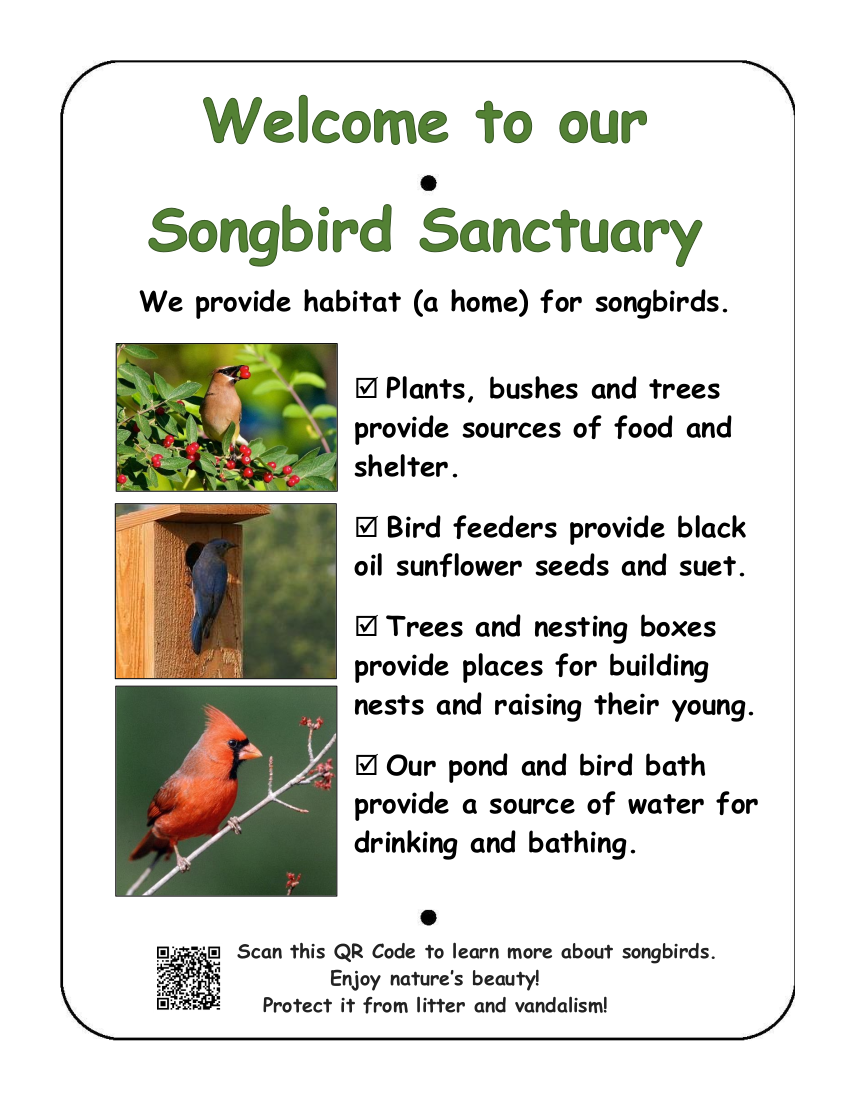
CLICK HERE to download the QR Code for this webpage.
You can inlcude the QR Code on the educational sign for your songbird garden in your outdoor classroom: PDF | Word Doc
Activity Resources
Review this list of AL Course of Study Science Standards that are bird-related and can be taught using OC birds and their associated educational materials.
Use our "Learn about Songbirds and Their Habitat" webpage to help your students research songbirds and their habitat and adaptations.
This Common Birds of Alabama PDF can be used in the same fashion as a powerpoint presentation to review common birds found in Alabama. Our Wonders of Wildlife webpages can also be used to review common birds in the OC.
Read and considering sharing these articles with your students:
Below are free activity sources related to birds:
AWF's Outdoor Classsroom Field Investigation Actvities
- Birds and Their Adaptations (4th): (Version #1: Word | PDF) (Version 2: Word | PDF) - Students learn first-hand how animals have adaptations to help them survive by observing and identifying a songbird in their outdoor classroom.
AWF's Outdoor Classroom Butterfly Themed Activities
- Watch the Birdie (Grades: K-2) - Students make pretend binoculars and take a bird watching walk in your outdoor classroom site.
- Birds are Everywhere (Grades: K-5) - Students explore your outdoor classroom’s wild bird habitat for evidence of birds and other wildlife.
- Fill the Bill (Grades: 3-8) - Students participate in activity stations that demonstrate how different types of beaks help birds eat specific types of food, and then they observe birds and the different types of beaks in your outdoor classroom’s wild bird habitat.
- Adapt a Bird (Grades: 3-8) - Students observe birds’ beaks and feet in your outdoor classroom site, and they they will create a new bird species using adaptations of birds.
- Birding Lane (Grades: 6-8) - Students test their skills at observing and identifying birds in wild bird habitats as they take a stroll along “Birding Lane” in your outdoor classroom.
- Songbird Survey (Grades: 9-12) - Students use bird-counting techniques to conduct an inventory of bird populations as they explore your outdoor classroom site.
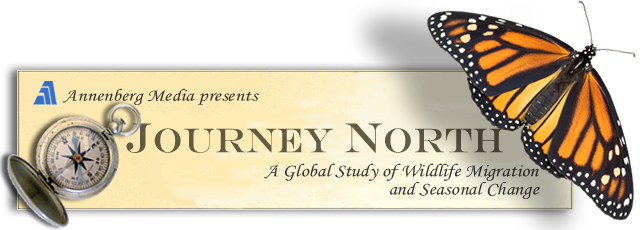 Journey North Website
Journey North WebsiteStudents help track hummingbird migration each fall and spring, and
report their sightings on the Journey North website as "citizen scientists".
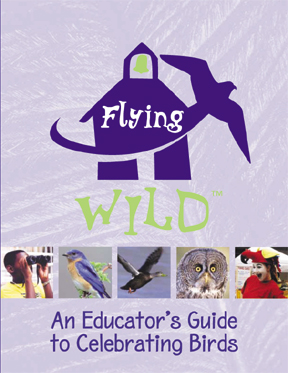
Flying WILD Activity Guide
Flying Wild activities use hands-on experiences, coupled with community outreach and
service learning applications, with birds as the focus.
 The Great Backyard Bird Count in February
The Great Backyard Bird Count in FebruaryStudents tally the number of individual birds of each species they see, and
then enter these numbers on the GBBC website as "citizen scientists".
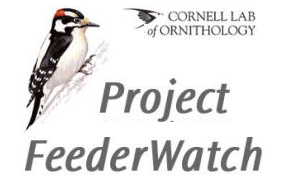 Project FeederWatch
Project FeederWatchA November-April survey of birds that visit backyards, nature centers, community areas,
and other locales in North America.
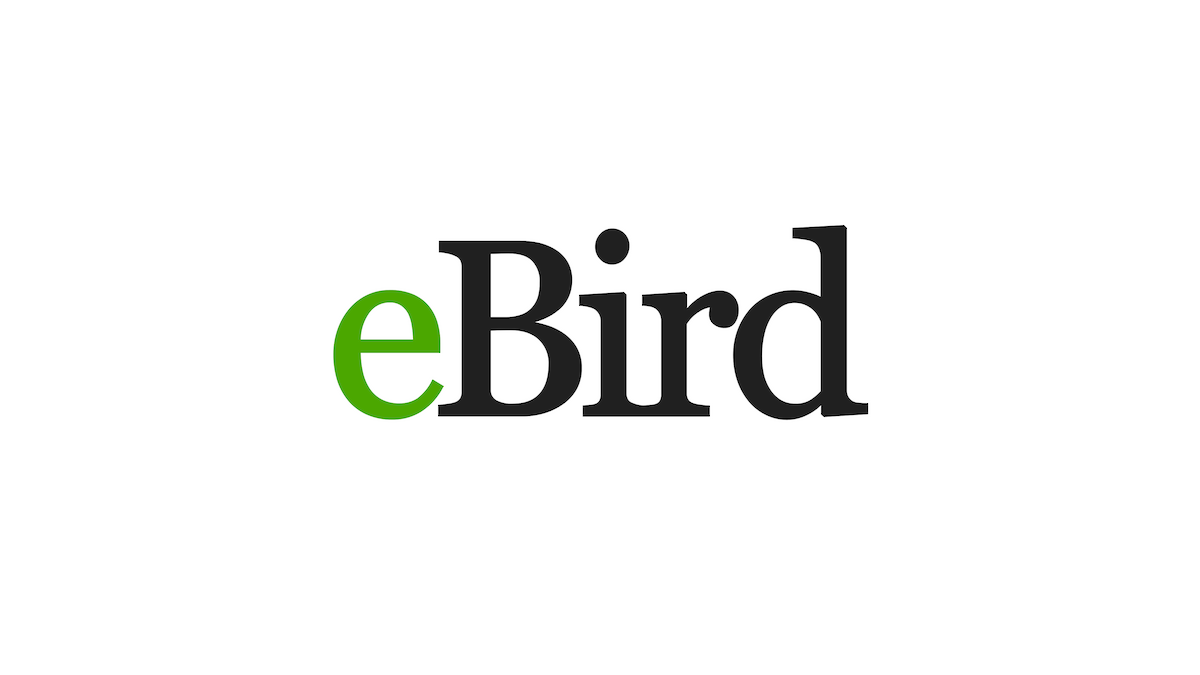 eBird
eBirdUse eBird to maximize the number of bird species you can find, keep track of your bird lists,
photos and sounds, explore latest sightings in your area, and contribute to science and conservation.
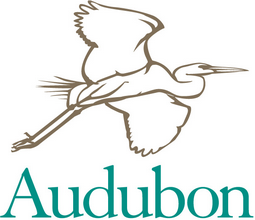 Audubon's Birding by Ear Program
Audubon's Birding by Ear ProgramLearn to bird-by-ear using this complete collection of resources.
Learn to ideitify birds using photos, calls, and songs.
This page is designed to provide students and teachers information about birds and bird life. There are activities, vocabulary words, reading materials and much more.
Maintenance Tips
To allow classes to adopt the Songbird Habitat including the fird feeder stations, use this Learning Station Adoption Form (Word Doc | PDF), along with the maintenance tips below that include feeding and care instructions:
To create a map of your school's Songbird Habitat, use this Example Learning Station Map & Plant ID
Form (Word Doc | PDF).
Example Photos
|
|
||
Questions: Contact the AWF at oc@alabamawildlife.org. .
 Wildlife Tag
Wildlife Tag
